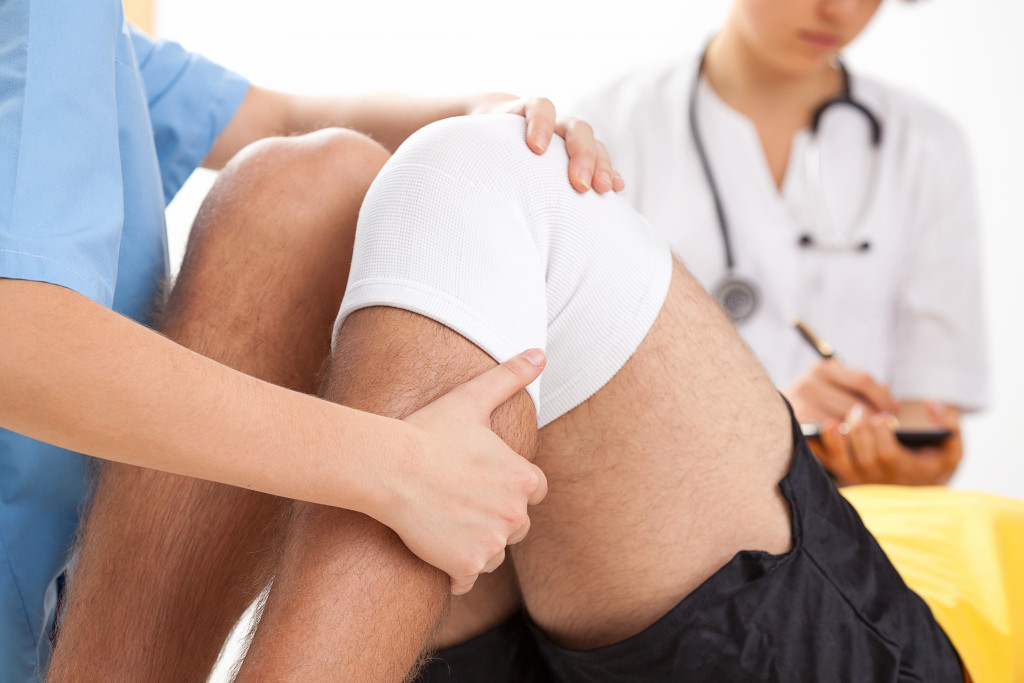- Follow the doctor’s orders for physical therapy and medications to ensure a successful recovery.
- Utilize the RICE method (Rest, Ice, Compression, Elevation) to reduce pain and swelling.
- Consider hyperbaric oxygen therapy to stimulate healing and improve blood flow.
- Take it easy and allow your body time to heal from an injury or surgery.
Knee injuries are among the most common musculoskeletal issues people all ages face. In fact, according to the Centers for Disease Control and Prevention, knee pain affects nearly 19 million adults in the United States every year. Knee pain can significantly reduce your quality of life, whether you have experienced an acute injury such as a torn ACL or meniscus tear or suffer from a degenerative condition like osteoarthritis.
Surgery may sometimes be necessary to treat a more severe knee issue. While surgery can help restore function and alleviate pain in the long term, it also comes with risks and potential side effects. Complications following knee surgery may include infection, deep vein thrombosis (blood clots), scarring, swelling, and stiffness. With any surgery – especially major surgeries like knee replacement – there is also always a risk of serious complications such as stroke or heart attack.
However, you might get past it and be on the way to recovery. Unfortunately, hospital bills might be expensive and depend on your insurance coverage. When you get home after surgery, here are a few things to do:
Follow Doctor’s Orders

Physical therapy is an integral part of knee injury recovery, and it can help you regain mobility and strength in your joint. However, it is essential to ensure you follow your doctor’s specific instructions for a successful outcome. Home physical therapy can lead to more damage than good without proper guidance and instruction.
Doctor consultation is essential for physical therapy at home because they can provide information on safe exercises tailored to your needs. They can also advise on how much activity is too much or too little, when progress should be expected and how long the recovery process should take. The doctor will also be able to monitor the recovery process and make any adjustments as needed. This includes checking for signs of infection or other complications that could arise from physical therapy. Furthermore, a doctor can prescribe medications that might be beneficial in speeding up the healing process.
Follow the RICE Method

Rest, Ice, Compression, and Elevation (RICE) is widely used for knee injury recovery treatment. It is an effective way to reduce pain and swelling following a knee surgery or injury. Here’s why the RICE method is suitable for knee injury recovery and the steps you can take to apply it:
Rest
The first step in the RICE method is rest. After an injury or surgery, your body needs time to heal. Rest helps reduce pain and swelling by allowing your body time to repair itself. It also gives your muscles time to relax and recover from the trauma of surgery or physical stress. To ensure you’re getting sufficient rest, limit activities that strain the joint—such as running or jumping—and avoid putting excessive weight on it. Additionally, try not to stay in one position for too long. Instead, gently stretch daily to keep your muscles limber and decrease stiffness.
Ice
Applying ice to the injured area is integral to the RICE method. Doing this helps reduce swelling and inflammation while relieving pain associated with a knee injury or surgery. The best way to get the maximum benefit from applying ice is by using a cold compress applied directly onto the affected area for 10-15 minutes every two hours during waking hours for 48-72 hours after an injury or surgery. However, ensure there aren’t any open wounds in the area before doing so, as it could cause more harm than good if done incorrectly.
Compression
Compressing an injured knee with a compression wrap can help improve blood flow, promoting healing and reducing swelling and inflammation around the joint. When applying compression wraps around the affected area, please ensure they are snug but not too tight to restrict circulation too much or cause discomfort when removing them later. When used correctly, compression wraps can provide additional support while helping alleviate any persistent pain felt in the joint due to an underlying condition like arthritis or bursitis.
Elevation
Elevating your injured knee can help reduce pain and swelling by draining excess fluids away from it, which would otherwise stay pooled around it, causing discomfort when moved even slightly. Keeping your leg above heart level whenever possible helps improve circulation in this area, which promotes healing while decreasing levels of inflammation caused by excess fluids held near it longer than necessary due to gravity alone.
Consider Hyperbaric Therapy
Hyperbaric chamber treatment services can also be beneficial in speeding up the recovery process. Hyperbaric oxygen therapy (HBOT) involves breathing 100% pure oxygen inside a hyperbaric chamber, which increases the amount of oxygen supplied to your body’s tissues. The increase in oxygen helps stimulate healing and improves blood flow, promoting a faster and more successful recovery from knee surgery or injury.
Final Thoughts
Knee surgery or injury can be debilitating, but with the proper treatment and care, you can be on your way to a full recovery. Follow your doctor’s orders, use the RICE method to reduce pain and swelling in the joint area, consider hyperbaric therapy if recommended or available, and take it easy until you are back to 100%. With these tips for knee injury recovery at home in mind, getting back on your feet should be a breeze.






